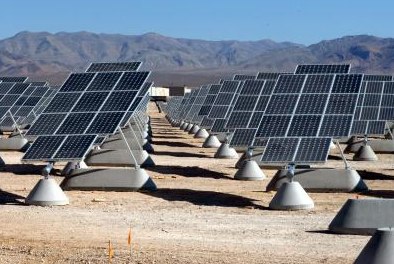 The $24 billion solar panel market could use a good dusting. The benefits of solar energy are well-known, but what’s rarely mentioned is its nemesis: dust. Even a little bit—one-seventh of an ounce per square yard—can weaken a panel’s power conversion by 40%.
The $24 billion solar panel market could use a good dusting. The benefits of solar energy are well-known, but what’s rarely mentioned is its nemesis: dust. Even a little bit—one-seventh of an ounce per square yard—can weaken a panel’s power conversion by 40%.
To tackle the problem, scientists looked to Mars, where similar technology was developed for space missions to the planet. NASA, along with Boston University, originally developed the self-cleaning technology for its Mars missions, to battle the planet’s red dust. Some of the rovers and other vehicles are solar-powered, and the self-cleaning coating on their solar panels helps them explore more effectively.
The technology, which has yet to be commercialized, consists of a clear coating with dust-monitoring sensors. The sensors send an electric charge into the coating when too much dust accumulates, and the coating creates a short blast of electricity to knock dust off the edges of the panels with minimal energy use. Scientists say close to 90% of the dust can be eliminated within two minutes every time dust piles up too high.
Coating the surface of solar cells could increase their efficiency and reduce maintenance costs, especially for large-scale installations. The installation is relatively simple, and doesn’t require any mechanical movement or water to dust the panels.
Self-cleaning solar panels would be especially effective in large installations, which are not only enormous, but often remote. The desert environments where many of these installations reside often challenge the panels with dust storms and little rain. Globally, the number of panels installed between 2003 and 2008 grew by 50%, and in the foreseeable future, the growth rate is expected to increase about 25% annually.